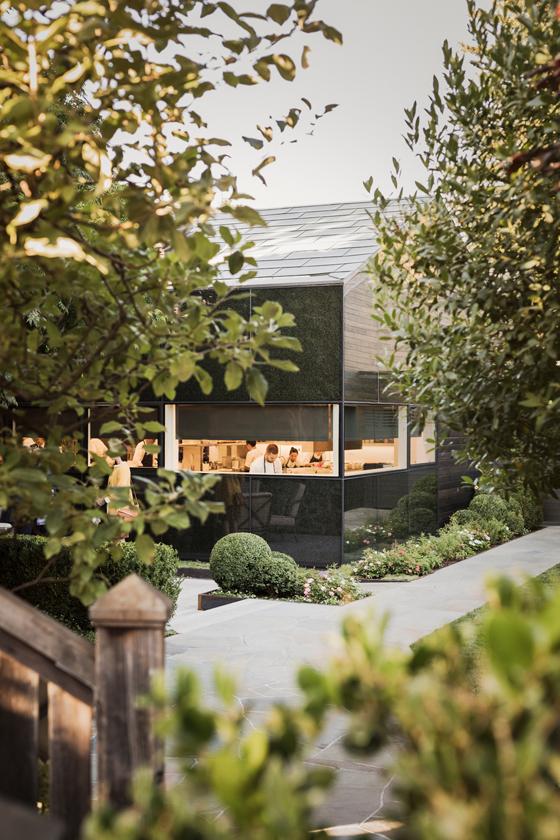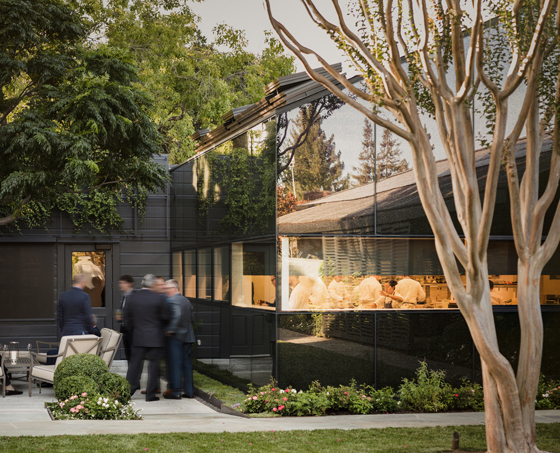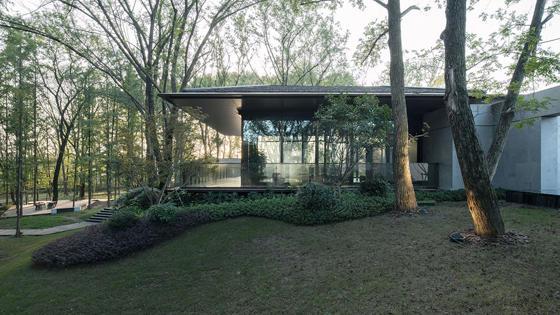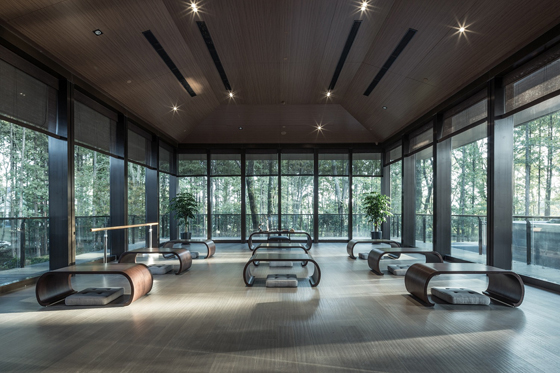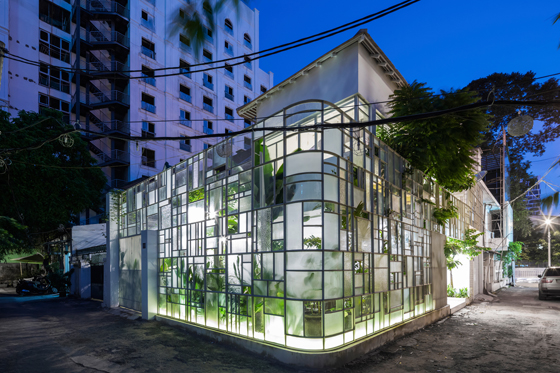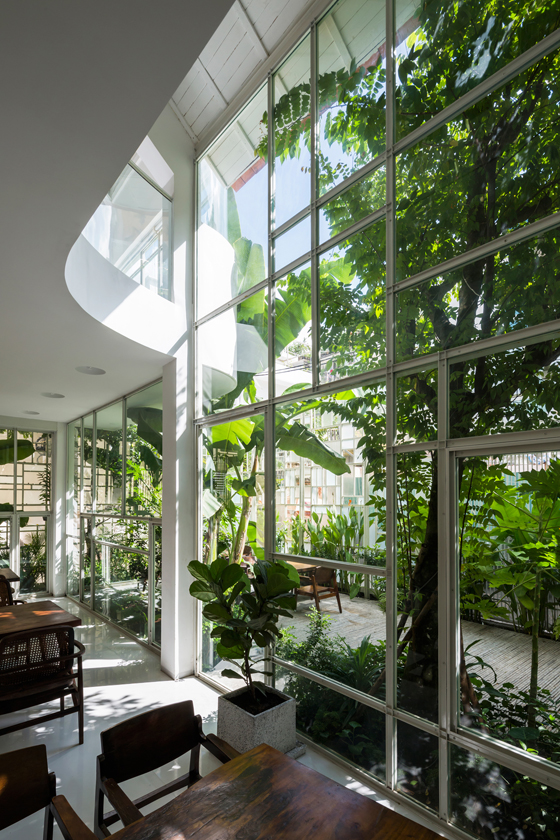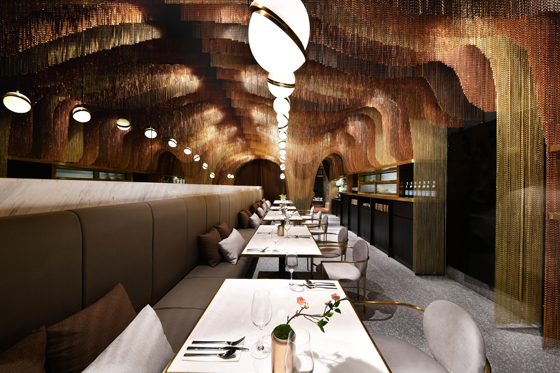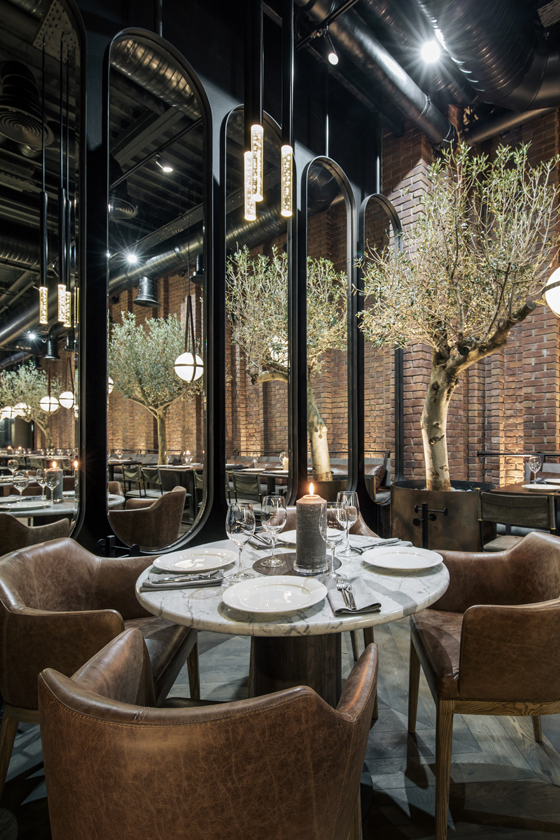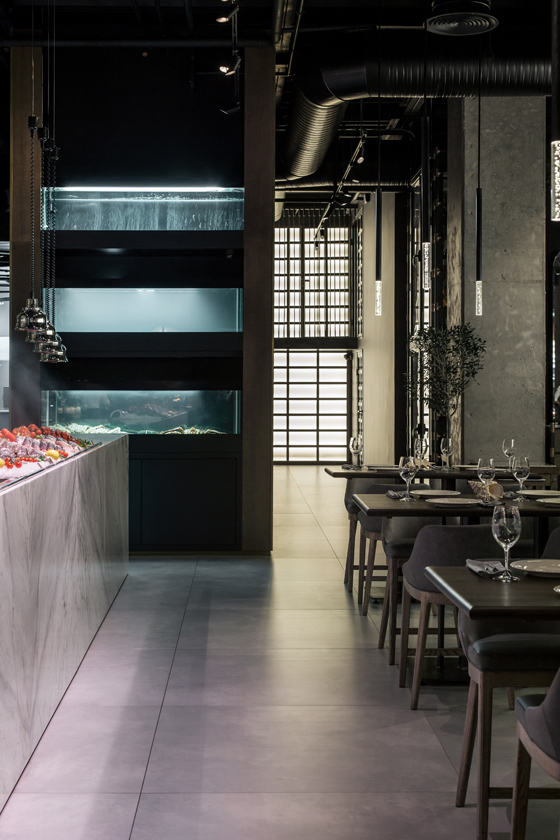Superfoods: Restaurants serving up a side of nature
Texto por Dominic Lutyens
London, Reino Unido
03.09.18
A raft of recently completed restaurants give new meaning to being on a plant-based diet, with designs that incorporate organic elements or literally merge with nature. So now there's no excuse not to eat (with) your greens.
Kientruc O’s use of local plants in the Ho Chi Minh City T House is not only a stylistic touch but a practical tool that provides ample shade, creates a microclimate and ultimately helps reduce costs. Photo: Hiroyuki Oki
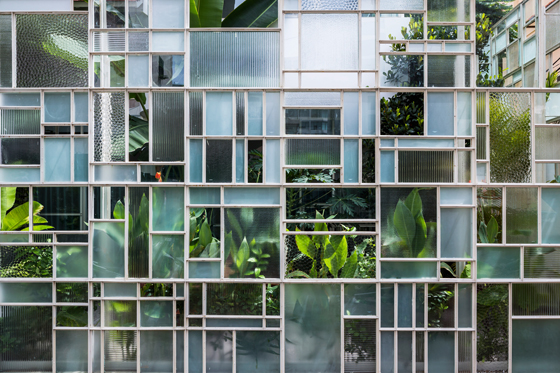
Kientruc O’s use of local plants in the Ho Chi Minh City T House is not only a stylistic touch but a practical tool that provides ample shade, creates a microclimate and ultimately helps reduce costs. Photo: Hiroyuki Oki
×Judging by a spate of recently designed restaurants, architects are besotted with nature. There is a logic to this: food is derived from nature, so plant-filled restaurants or ones with garden views reinforce that link. Other reasons for the trend could be the skyrocketing demand for organic food and the current vogue for jungle-like interiors brimming with plants or terrariums.
Recently renovated by Snøhetta, Californian restaurant The French Laundry has a new kitchen annexe with ribbon windows that draw in daylight and overlook the verdant garden. Its courtyard boasts nooks for outdoor dining. Photos: Michael Grimm

Recently renovated by Snøhetta, Californian restaurant The French Laundry has a new kitchen annexe with ribbon windows that draw in daylight and overlook the verdant garden. Its courtyard boasts nooks for outdoor dining. Photos: Michael Grimm
×Perhaps California’s clement climes are particularly conducive to this approach. Take the recently expanded Michelin three-starred The French Laundry in Yountville, California, bought by its chef Thomas Keller in 1994. Architects Snøhetta, along with Keller and San Francisco-based architects Envelope A+D, which researched the staff’s needs, have created a new kitchen and renovated its courtyard.
The existing, rustic-looking building dates from 1900 and is surrounded by gardens and a lawn. Like the old building, the new kitchen is clad in natural materials, including charred wood and has a traditional pitched roof, although its exterior is clean-lined and modern. The kitchen’s ribbon window maximises views of greenery, including Japanese maple trees, and provides worktops with more daylight. Its curved white ceiling is intended to evoke a tablecloth unfurled across a table. In the courtyard are nooks for outdoor dining.
Nature and architecture collide in the woodland setting of Goa's He restaurant in Nanjing, China. Floor-to-ceiling glazing accentuates the connection between indoors and out, as do courtyards built around mature trees. Photos: Shiromio

Nature and architecture collide in the woodland setting of Goa's He restaurant in Nanjing, China. Floor-to-ceiling glazing accentuates the connection between indoors and out, as do courtyards built around mature trees. Photos: Shiromio
×Indoors and outdoors merge more literally at He, a restaurant surrounded by woodland in Nanjing, China, designed by architects Goa. Founded on ecological principles, it is built around trees with a view to protecting them. The architects reconciled the building’s geometric, almost bunker-like structure with the asymmetry of nature, with trees rising up through courtyards. Inside a bar with a large window overlooks views of the sylvan setting.
The all-white interior of Kientruc O's T House, a restaurant in Ho Chi Minh City, Vietnam, provides a neutral backdrop for the lush green tropical plants invading the building or pressing against its frosted or transparent windows. Photos: Hiroyuki Oki
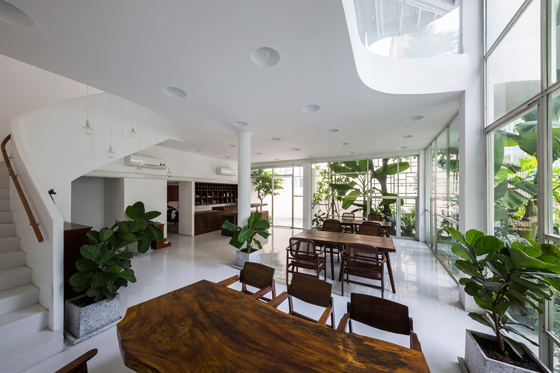
The all-white interior of Kientruc O's T House, a restaurant in Ho Chi Minh City, Vietnam, provides a neutral backdrop for the lush green tropical plants invading the building or pressing against its frosted or transparent windows. Photos: Hiroyuki Oki
×Nature also encroaches on T House, a restaurant in Ho Chi Minh City, Vietnam, dreamt up by Kientruc O. This is surrounded by a glass wall with a grid of panes, which references Le Corbusier’s Modulor concept — whereby architecture is in harmony with human proportions — and envelops a jungle-like garden.
At Spacemen's Icha Chateau, a restaurant in Shanghai, diaphanous, tactile curtains — inspired by China’s tea plantations and made of 35,000m of gold chains in three rich, metallic tones — delicately divide the space. Photos: Chen Xuan Min
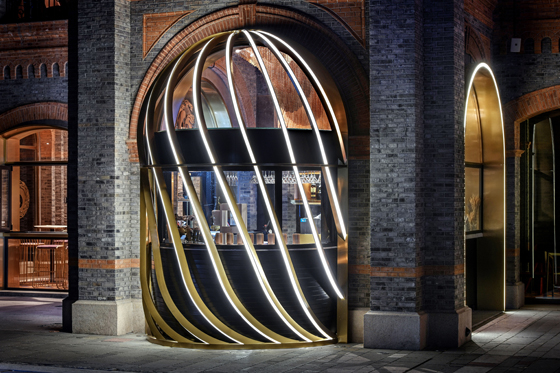
At Spacemen's Icha Chateau, a restaurant in Shanghai, diaphanous, tactile curtains — inspired by China’s tea plantations and made of 35,000m of gold chains in three rich, metallic tones — delicately divide the space. Photos: Chen Xuan Min
×Meanwhile, Icha Chateau, a tea bar in Shanghai, by Spacemen, is also inspired by nature, specifically by China’s tea plantations. But here it is stylised, abstracted, the plantations interpreted as undulating gold-coloured chain-metal curtains that simultaneously form private alcoves.
Marble tables, a marble slab surmounted by a 3m-long seafood display case, wine racks stocked with over 200 types of wine and a sober colour scheme create an appealingly old-world ambience at YoDezeen Studio's Catch in Kiev. Photos: Andrii Shurpenkov
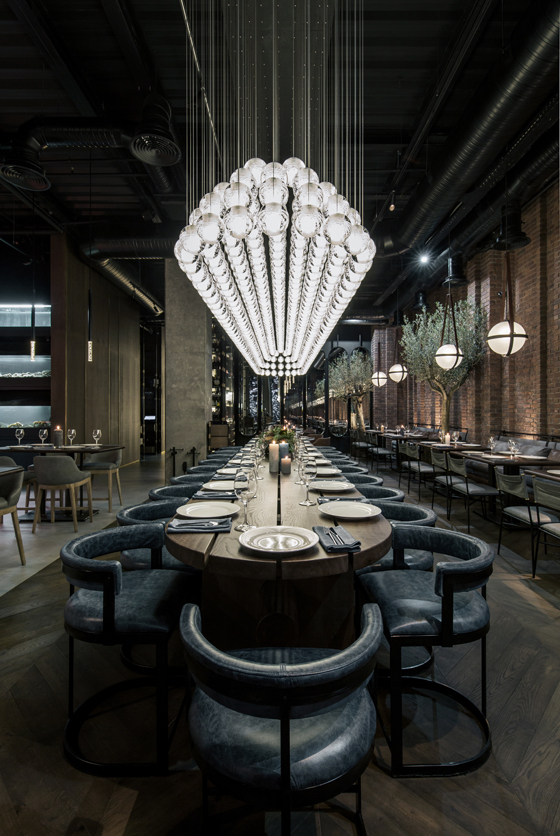
Marble tables, a marble slab surmounted by a 3m-long seafood display case, wine racks stocked with over 200 types of wine and a sober colour scheme create an appealingly old-world ambience at YoDezeen Studio's Catch in Kiev. Photos: Andrii Shurpenkov
×By contrast, Catch, a fish restaurant in Kiev, whose interior has been redesigned by YoDezeen Studio, defies the trend for all things organic — unless you count its rough, exposed brickwork and slightly surreal olive trees growing indoors. Elsewhere old-world glamour rules, thanks to an enormous banqueting table, mirrors and a vast chandelier and seafood display case.
While many designers are in thrall to nature, some still wish to recreate a classic, urban experience.
© Architonic

